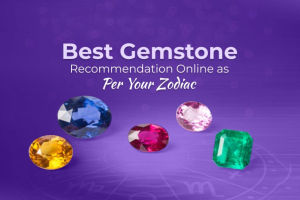Decoding Hair Product Labels: Understanding Ingredients and Making Informed Choices

Introduction
Welcome to the world of hair care products, where deciphering labels can feel like navigating a complex maze. Have you ever picked up a bottle, only to find a list of ingredients that seem more like a science experiment than something you'd want to put on your hair? Well, you’re not alone.
Whether you're dealing with hair loss, aiming for luscious hair growth, or just looking to enhance your curly locks, understanding the fine print on those bottles is your first step. In our quest for knowledge, we'll also explore the trending ingredient: rice water for hair loss. Yes, you read that right! Rice water has gained popularity for its potential benefits, especially concerning hair loss.
Importance of Understanding Hair Product Labels
Let's face it, these labels are the ones that control your hair's health. Hydrolyzed keratin and dimethicone, two substances with tongue-twisting names, can still have a big impact on your hair. By deciphering these labels, you arm yourself with knowledge and open the door to choosing products that correspond to your hair objectives.
Think about the wide range of hair styles and textures, from straight strands to afro curls. Understanding the ingredients is especially important because every hair type has its own peculiarities and requirements. The greatest hairstyle for your smooth locks might not always be the one that suits your friend with bouncy curls. This is where label comprehension really shines.
Common Ingredients in Hair Products and Their Effects
Hair products often feature a range of ingredients that contribute to their effectiveness. Here are some of the most common ingredients you might encounter on labels, along with a brief explanation of their effects:
Hydrolyzed Keratin: This ingredient can help strengthen hair strands by replenishing the natural protein that makes up your hair.
Dimethicone: Dimethicone is a type of silicone that's often used to create a smooth and shiny appearance, helping to control frizz and enhance manageability.
Panthenol (Provitamin B5): Panthenol is known for its moisturizing properties. It can attract and retain water, keeping your hair hydrated and soft.
Glycerin: Glycerin is a humectant, meaning it draws moisture from the air into your hair, providing hydration and reducing dryness.
Coconut Oil: This natural oil is rich in fatty acids, which can penetrate the hair shaft, nourishing and moisturizing it from the inside out.
Argan Oil: Argan oil is often referred to as "liquid gold" for hair. It's rich in antioxidants and essential fatty acids, providing shine and helping to tame frizz.
Additionally, in recent times, rice water for hair loss has gained attention for its potential benefits. Packed with vitamins and minerals, rice water for hair loss is believed to promote hair growth, improve hair's elasticity, and add shine. While it might not be as widely known as some other ingredients, its historical use in hair care, especially in certain cultures, adds to its intrigue. As with any ingredient, it's important to consider how your hair responds to it, as individual results can vary. For example, using rice water for hair growth is especially effective for curly and wavy hair types.
Red Flags: Potentially Harmful Ingredients to Avoid
While many products used in hair care are beneficial, some may actually be detrimental. When reading product labels, it's critical to be aware of these potential caution signs. Let's explore the elements that could cause alarm and the reasons you might want to avoid them. Knowing what to avoid will help you make better decisions for the health of your hair.
Hair products containing harmful substances can cause havoc on your delicate locks. Sulfates remove natural oils from your hair, leaving it dry and brittle, while silicones can cause product buildup, leaving it dull and lifeless. Parabens and phthalates may disturb the natural equilibrium of your hair, potentially causing scalp problems. Formaldehyde-releasing chemicals and artificial perfumes, for example, might cause allergies or irritations. Avoiding these dangerous ingredients is critical to keeping your hair vibrant, healthy, and free of unneeded damage.
In a world where natural solutions are increasingly sought after, ingredients like rice water for hair growth have gained attention. The use of natural, plant-based ingredients can often provide a gentler, more nurturing approach to hair care. It is completely natural and many companies mix it with other natural ingredients for maximum benefits.
When scanning hair care product labels, it's wise to watch out for these potentially harmful ingredients:
Sulfates: These harsh cleansers can strip your hair of natural oils, leading to dryness and damage.
Parabens: Often used as preservatives, parabens have been linked to hormone disruption and allergic reactions.
Phthalates: These chemicals, commonly used to add fragrance, can also interfere with hormones and potentially harm your health.
Silicones: While not inherently harmful, silicones can build up on your hair, making it look dull and weigh it down.
Formaldehyde-Releasing Agents: These preservatives slowly release formaldehyde, a known carcinogen, which is definitely one to avoid.
Artificial Fragrances: These can contain a mix of hidden chemicals, triggering allergies or sensitivities.
Steering clear of these ingredients can help you make choices that prioritize the health and vitality of your hair.
Decoding Labels: Practical Tips
It's not difficult to decipher the labels on hair products. Here are some simple suggestions to assist you in understanding what you're reading:
Look for Key Ingredients: Focus on the first few ingredients listed – they make up the bulk of the product.
Avoid Long Lists: Products with extensive ingredient lists may contain more fillers than effective components.
Understand the Order: Ingredients are listed by quantity, so the closer to the top, the more the product contains.
Research Unfamiliar Terms: If something sounds like a tongue-twister, a quick search can shed light on its purpose.
Avoid Overcomplicated Names: Sometimes, simpler ingredients are better for your hair.
Consider Your Hair Type: Ingredients that work wonders for one hair type might not suit another.
Conclusion
Understanding hair product labels involves more than simply reading small print; it also means taking control of your hair care regimen. Knowing the most frequent components, potential warning signs, and useful label-reading advice will enable you to make decisions that complement the distinctive characteristics of your hair. Keep in mind that the health and vitality of your hair reflect the attention you give it. Therefore, may your decisions be well-informed, your hair be healthy, and your confidence shine brighter than ever as you traverse the world of hair care products. Enjoy reading labels and enjoy your next hair days!
FAQs
Why is it important to understand hair product labels?
Understanding labels helps you know what you're putting on your hair. It lets you avoid harmful ingredients and choose products that align with your hair's needs and goals.
What are some common ingredients found in hair products?
Common ingredients include hydrolyzed keratin for strength, coconut oil for hydration, and panthenol for moisture retention.
Are there any ingredients to avoid in hair products?
Yes, avoid sulfates that can strip hair, parabens linked to hormone disruption, and silicones that can lead to buildup.
How can I make informed decisions when choosing hair products?
Look for key ingredients, avoid lengthy lists, understand ingredient order, and consider your hair type. Research unfamiliar terms and trust transparent brands for the best choices.




